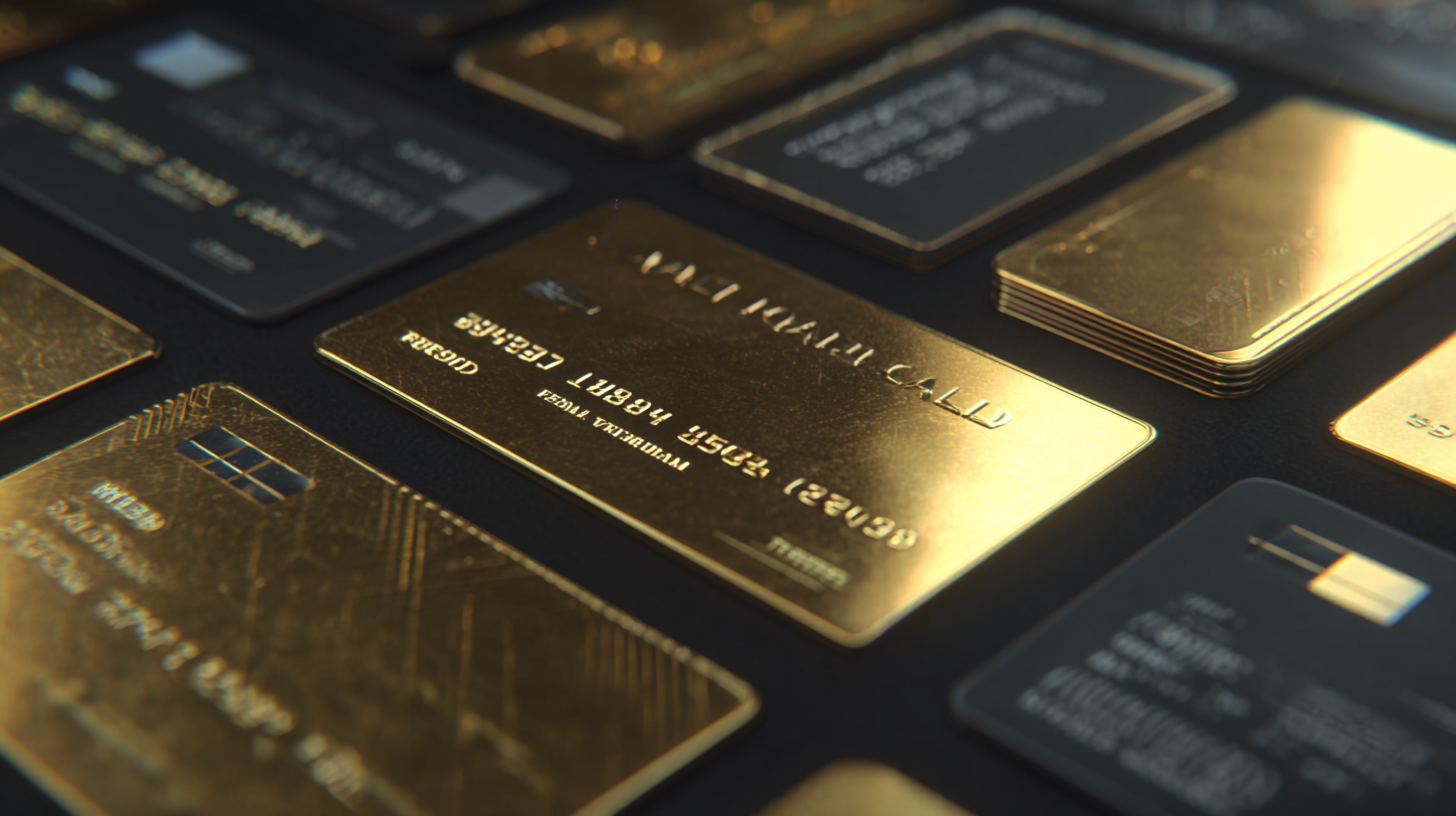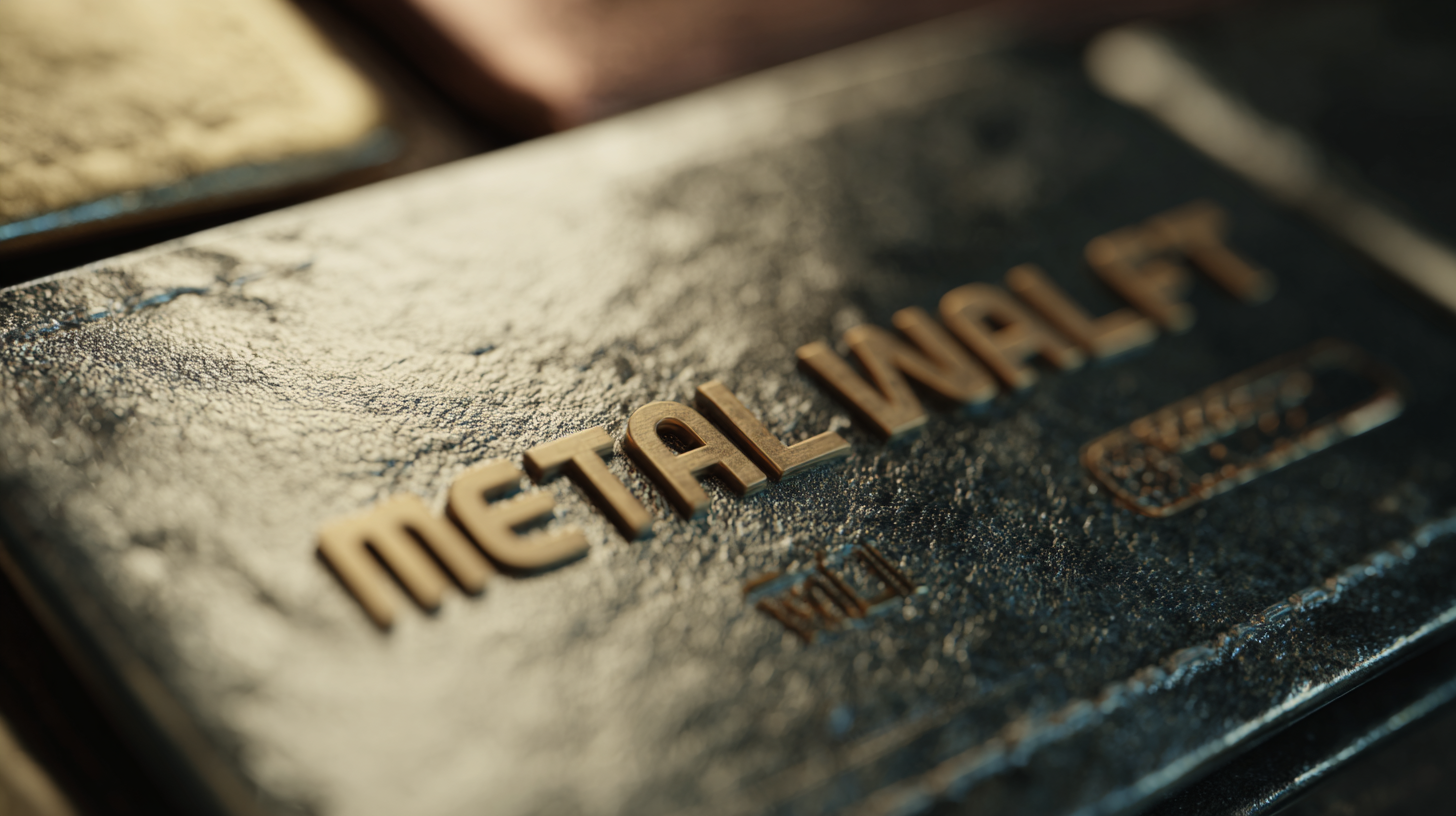2025 Best Metal Wallet Trends Shaping Global Procurement Strategies
As the demand for secure, stylish, and functional accessories continues to rise, the metal wallet has emerged as a pivotal player in the global procurement landscape. According to a recent market analysis by Grand View Research, the global wallet market is expected to reach USD 246.72 billion by 2025, with innovative designs such as metal wallets driving significant growth. This evolution is fueled by an increasing consumer awareness of identity theft and the necessity for durable, RFID-blocking solutions. Furthermore, a study by Mordor Intelligence indicates that the metal wallet segment is projected to witness a compound annual growth rate (CAGR) of 7.5% over the next few years, highlighting its growing popularity among tech-savvy consumers. In this blog, we will explore the latest trends in metal wallets that are shaping procurement strategies worldwide, focusing on the intersection of design, technology, and consumer preferences.

Emerging Designs: Innovative Features of Metal Wallets in 2025
As we move towards 2025, metal wallets are emerging as a significant trend in global procurement strategies, driven by innovative features that cater to a tech-savvy consumer base. According to a recent report by Market Research Future, the global wallet market is projected to grow at a CAGR of 5.8% from 2023 to 2028. This growth is largely fueled by the increasing demand for minimalist wallets that combine durability with style. Manufacturers are focusing on lightweight designs and high-strength materials that not only protect cards from physical damage but also feature RFID-blocking technology to prevent unauthorized scanning.

Emerging designs in metal wallets include modular and customizable options, allowing users to personalize their wallets to suit their lifestyle. A study by Statista indicates that nearly 70% of consumers prefer products that offer customization, highlighting a shift towards personalization in consumer goods. Additionally, advancements in production techniques such as precision engineering and laser cutting are enabling the creation of intricate designs that appeal to fashion-conscious customers. As procurement professionals adapt to these trends, collaborating with innovative manufacturers will be key to staying ahead in a competitive market.
Sustainability Matters: Eco-Friendly Materials in Metal Wallet Production
As the demand for sustainable products grows, metal wallet manufacturers are stepping up their efforts to adopt eco-friendly materials. Traditional metal production often involves processes that can be harmful to the environment, but innovative companies are now exploring alternative materials and methods that significantly reduce their carbon footprint. For instance, manufacturers are increasingly leaning towards recycled aluminum and stainless steel, which not only help to save natural resources but also contribute to a circular economy. This shift not only meets the evolving preferences of consumers but also aligns with broader corporate social responsibility goals.
Moreover, ecological consciousness is influencing design choices as well. Many brands are opting for minimalist designs that utilize less material without compromising functionality. Additionally, there’s a rising trend to incorporate biodegradable elements into packaging and accessories associated with metal wallets. By choosing eco-friendly materials and processes, these companies are not only appealing to environmentally-conscious consumers but also setting a standard for sustainability in the industry. As we move towards 2025, it’s clear that the integration of sustainability in metal wallet production is not just a trend; it’s a pivotal shift that promises to reshape global procurement strategies.
Smart Technology Integration: The Role of Tech in Modern Metal Wallets
The integration of smart technology in metal wallets is redefining the product landscape and influencing global procurement strategies. As consumers increasingly seek smart features that enhance security and functionality, manufacturers are responding by embedding technologies such as RFID-blocking, Bluetooth, and NFC capabilities into their wallet designs. According to a report from Research and Markets, the global smart wallet market is projected to grow at a CAGR of 23.6%, reaching $101.6 billion by 2025. This growth emphasizes the importance of tech integration in meeting consumer demands for safety and convenience.

Moreover, advancements in materials science have led to the development of more durable yet lightweight metal wallets, catering to the rising trend of minimalism and personalized accessories. A report by Transparency Market Research indicates that the demand for metal wallets has seen a significant increase, driven by their sleek design and enhanced security features. Organizations involved in procurement must pivot towards sourcing from manufacturers who invest in smart technologies, as these innovations will not only meet consumer expectations but also set companies apart in a competitive market. Embracing these trends will be key for stakeholders looking to align their strategies with the evolving demands of tech-savvy consumers.
Consumer Preferences: Analyzing Trends in Metal Wallet Usage
As consumer preferences evolve, the demand for metal wallets is increasingly shaping global procurement strategies. Shoppers are shifting towards materials that convey durability and modern aesthetics, and metal wallets have emerged as a stylish alternative to traditional leather. This trend reflects a broader desire for products that not only serve functional purposes but also offer distinctiveness and status. Manufacturers are noticing that consumers gravitate towards innovative designs that incorporate technology and sustainability, making metal wallets a prominent choice for tech-savvy and environmentally conscious buyers alike.
The implications for procurement are significant. Supply chain professionals must adapt to a growing demand for high-quality metal materials and efficient production processes that align with consumer expectations. As popularity rises, the need for strategic sourcing of metals that are both lightweight and resistant to wear-and-tear becomes crucial. Additionally, with customization becoming a key factor in consumer choices, businesses are exploring bespoke options that cater to individual tastes, further driving competition in the metal wallet market. Companies that recognize and respond to these trends will likely position themselves favorably in the evolving landscape of global procurement strategies.
Global Sourcing Strategies: Navigating Supply Chains for Metal Wallet Manufacturing
As the landscape of metal wallet manufacturing evolves, global sourcing strategies play a pivotal role in ensuring efficiency and resilience in supply chains. The recent surge in raw material prices and geopolitical shifts has highlighted the necessity for manufacturers to rethink their procurement approaches. According to industry reports, a staggering 80% of manufacturers are facing significant supply chain disruptions, prompting a strategic pivot towards local sourcing. This trend aligns with the broader push seen globally, as companies look to reduce reliance on overseas suppliers to mitigate risks associated with tariffs and export controls.
Tip: Consider diversifying your supply chain by evaluating local suppliers who can meet your production needs. This not only enhances agility but may also reduce costs associated with tariffs.
Furthermore, the rise of sustainability in procurement practices cannot be overlooked. It is reported that companies prioritizing sustainable sourcing strategies are witnessing up to a 30% improvement in brand loyalty and customer perception. As consumers demand more transparency in product origin, manufacturers are finding that investing in environmentally friendly practices enhances their competitive edge in the market.
Tip: Implement a systematic approach to assess your suppliers’ sustainability practices. Tools and frameworks are available that can help evaluate environmental impact, ensuring your supply chains are not only resilient but also responsible.
2025 Best Metal Wallet Trends Shaping Global Procurement Strategies
 English
English English
English Español
Español Português
Português русский
русский Français
Français 日本語
日本語 Deutsch
Deutsch tiếng Việt
tiếng Việt Italiano
Italiano Nederlands
Nederlands ภาษาไทย
ภาษาไทย Polski
Polski 한국어
한국어 Svenska
Svenska magyar
magyar Malay
Malay বাংলা ভাষার
বাংলা ভাষার Dansk
Dansk Suomi
Suomi हिन्दी
हिन्दी Pilipino
Pilipino Türkçe
Türkçe Gaeilge
Gaeilge العربية
العربية Indonesia
Indonesia Norsk
Norsk تمل
تمل český
český ελληνικά
ελληνικά український
український Javanese
Javanese فارسی
فارسی தமிழ்
தமிழ் తెలుగు
తెలుగు नेपाली
नेपाली Burmese
Burmese български
български ລາວ
ລາວ Latine
Latine Қазақша
Қазақша Euskal
Euskal Azərbaycan
Azərbaycan Slovenský jazyk
Slovenský jazyk Македонски
Македонски Lietuvos
Lietuvos Eesti Keel
Eesti Keel Română
Română Slovenski
Slovenski



